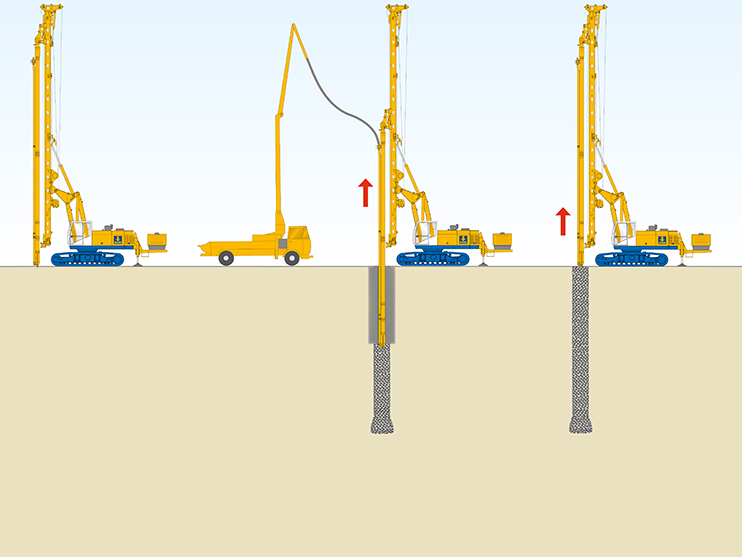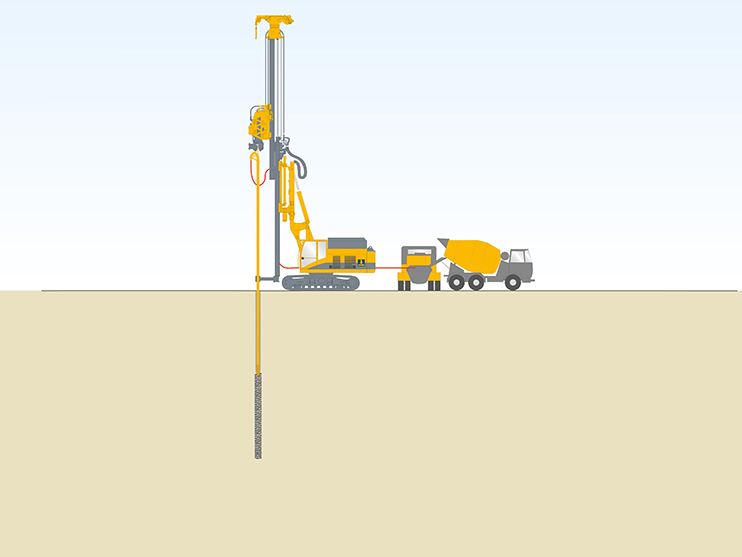Soil Improvement
Continually rising real estate prices mean that even ground with less than adequate load-bearing capacity is becoming ever more attractive to developers. Ground improvement can be achieved by the highly productive methods of vibro-compaction, vibro-displacement densification, vibro-cast-in-place or soil stabilization columns. Selection of the most suitable method depends primarily on the ground at the site and on the loads to be carried.
Types of Construction Method
Granular or weakly cohesive sediments such as gravel and sand often have very uneven layer densities in their natural state. With vibro-compaction densification (VCD) this can be increased to around 80 %. In the process, the soil is "floated" by a water or air flush, the vibrator sinks and a settlement depression is formed at ground level. This is filled with added material. By extracting the vibrator in stages, a compacted zone 2 to 4 m in diameter is created.
In cohesive soils it is not possible to rearrange the grains. In the vibro-displacement densification (VDD), the added material is transported directly to the vibrator tip, compacted by multiple displacement stages and pressed into the surrounding soil. This creates a crushed rock or gravel column which improves the surrounding cohesive soil due to the greater rigidity of the installed added material. Selection of the most suitable method depends primarily on the ground at the site and on the loads to be carried.
t.








